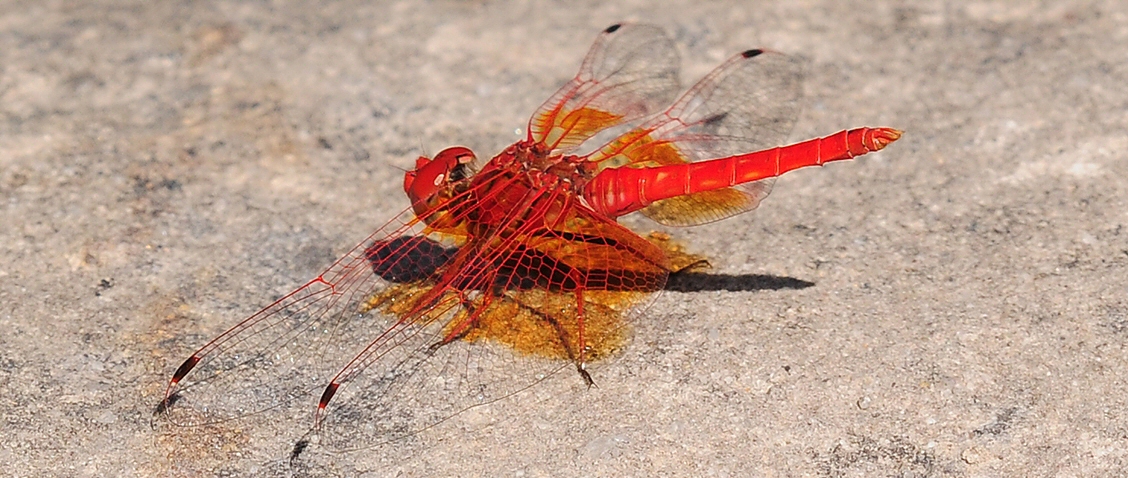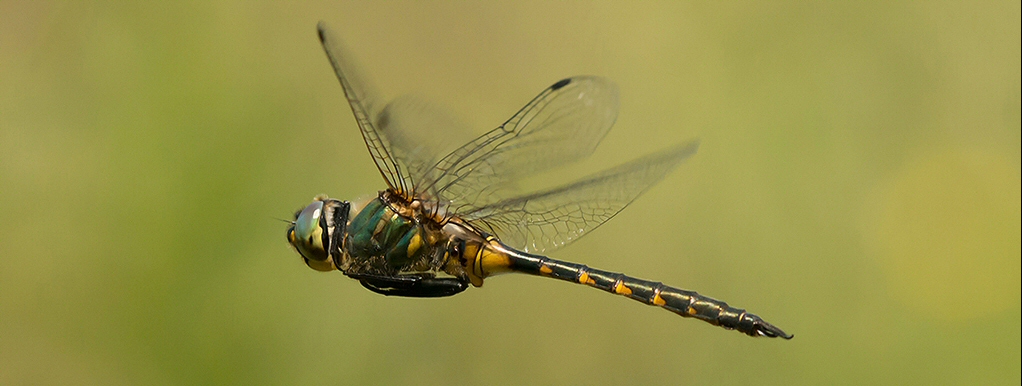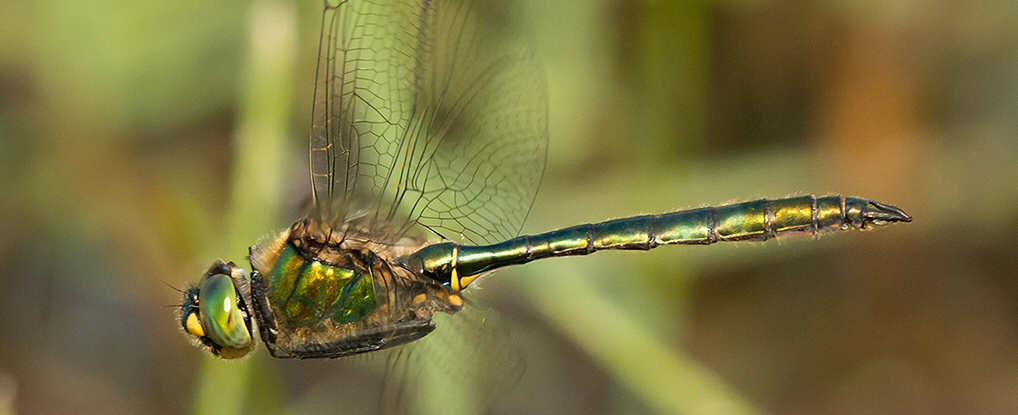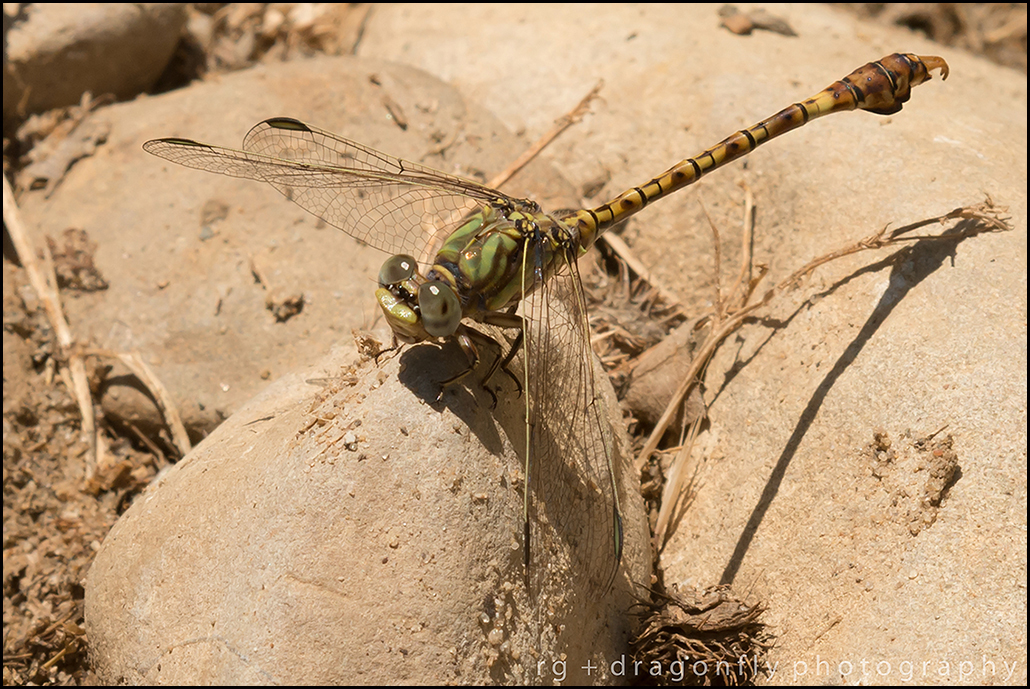Please join the British Dragonfly Society by visiting www.british-dragonflies.org.uk
Banded Demoiselle – Calopteryx splendens – UK European Dragonfly photo
Richard Gabb’s Background
Providing stunning photographs of Dragonflies and where to see them in their typical habitats has been my goal for several years now. My interest began in the 1970’s when I asked a friend to name a beautiful small red insect. He replied that it was a dragonfly although he didn’t know the species. Luckily at about this time a new guide-book became available – Cyril Hammond’s ‘The Dragonflies of Great Britain and Ireland’. Whilst not in the mode of current portable guides it did provide us with excellent colour drawings at several times life size.
We soon realised that we had seen our first male Large Red Damselfly (Pyrrhosoma nymphula). Suffice to say that my interest grew rapidly and I soon realised that suitable habitat was disappearing at a fast rate in my county of Cheshire U.K. Together with another good friend, David Kitching, who was Cheshire Countryside Manager at the time, I devised a recording scheme whose methodolgy was copied from the County’s breeding bird survey. This entailed observing a dragonfly’s behaviour against a range of criteria in order to determine whether the species was possibly, probably or proven to be breeding.
In 1992, with the help of records from many people, the results were published in ‘ The Dragonflies and Damselfies of Cheshire ‘ – National Museums and Galleries, Liverpool. Whilst essentially this book is a distributional guide it was very well received although it is now long out of date and out of print. It is more than replaced however by the Cheshire Dragonfly website which is still run by David Kitching, the County Recorder. This is one of the best of the U.K.’s dragonfly web-sites showing up-to-date information on the county’s Odonata. Full county maps, in a 2 kilometre square format, are available for all the species I have chosen to represent from a type habitat in Cheshire.
Sadly, and regretfully, I then defected from dragonflies to look for, and film, birds around the world. Over the last few years however my interest in dragonflies has been re-kindled, mainly due to the advent of digital photography.
Orange-winged Dropwing – Trithemis kirbyi European Dragonfly photo
The Choice of My Images
Even the most casual observer will realise that dragonflies are beautiful insects but they are very difficult to approach without frightening them away.
Regretfully the old names of ‘Horse Stinger ‘and ‘Devil’s Darning Needle’ still linger in the minds of many who do not understand that these insects create no risk whatsoever. Indeed dragonflies are beneficial insects which provide a very good indicator of the ecological state of the water bodies in the region. So, dragonfly photography is challenging to say the least.
Of the thousands of photographs I’ve taken a few stand out as worthy of saving and sharing. The reasons for their selection are numerous. Clearly a well exposed and sharp picture must count highly, but there are other reasons – perhaps just the pose appeals, or the dragonfly’s behavior, its particular habitat, the relative scarcity of the species or even the historic value of the photograph.
The number preceding the name for each of the British and European dragonflies shown is simply the sequential number of each of the species covered in the Field Guide to the Dragonflies by Klaas-Douwe B Dijkstra, illustrated by Richard Lewington.
My Website
Moving your cursor over either Damselflies, or Dragonflies of Britain and Europe in the header box and clicking will reveal a drop down menu listing all the species I’ve entered to date. Clicking on any of the small thumbnail photos will bring up a larger image and clicking on ‘Discover this Species’ will reveal my full range of photos . The most recent species to be entered are indicated by [NEW] in their titles. The NEXT and PREVIOUS buttons on each page enable you to continue without return to the menu.
Each species is named by its scientific name, its standard international English name, any alternative British Dragonfly Society name and where appropriate the North America
Small Whiteface – White-faced Darter – Lecorrhinia dubia UK European Dragonfly photo
A full size photograph, usually of a male, is followed by comments about my selection of the photographs and details of the key identification points for the species. Arrow pointers indicate the most important distinguishing features for two of the UK’s blue damselflies which frequently cause confusion.
The second photograph shown for each species was taken at or near the dragonfly’s breeding water which is shown as a typical habitat picture. This can be a small seepage or pond, a stream, river or the largest lake. Seeking these out has taken me to some of the most wonderfully scenic places. This site’s U.K. Grid Reference and G.P.S. reference are shown where possible and relevant. Note that these references detail the exact place where the species photograph was taken whilst the breeding site photograph shown may be a short distance away. All remaining pictures follow.
Small Pincertail – Onychogomphus forcipatus European Dragonfly photo
I have now added a third section headed The Gambia. This shows species taken during several trips to that country. There is, as yet, no Field Guide to the dragonflies there but many of the species to be found in The Gambia are covered in ‘The Dragonflies and Damselflies of Eastern Africa’ – Klaas-Douwe B. Dijkstra & Viola Clausnitzer. I have drawn up a provisional systematic list of Odonata for The Gambia which heads this section as currently there is no publication covering the Dragonflies and Damselflies of West Africa.
One or Two Last Notes ….
I hope you enjoy looking at these photographs as much as I have done in taking them. All are taken in natural light and conditions without resorting to capture, cooling and ‘hanging up’.
Viewing other web sites has given me much pleasure. I can recommend none more highly than the Cheshire site mentioned above and http://www.dragonflypix.com whose owners are among the most helpful dragonfly enthusiasts I’ve met. Arturo Bernal in Andalucia has been a good friend who has shown me much that I would otherwise have missed. Mike Taylor also provided me a wonderful opportunity to visit the less known Aegean island of Chios which is as worthy of further exploration for dragonflies as its larger neighbour Lesvos to the north.
Copyright on images is easy to quote but impossible to monitor. A simple request to use any of my images out of courtesy would be sufficient. Your comments would also be welcome in the box provided.
This web site will be updated as new material is prepared with the latest species shown having ‘NEW’ preceding their name.
MY PHOTOGRAPHIC HARDWARE : Nikon D 800, Nikon D 500, Nikkor 300 mm f4E, Nikkor 200 mm Micro, Nikkor 105 mm Micro, Nikkor 16-35 mm AF-S f/4G ED VR, Voigtlander 40 mm f/4, Gitzo GT 1542 Tripod, Wimberley Gimbal Head
EDITING SOFTWARE : Lightroom 5, Adobe Photoshop CS6
We are pleased to recommend Aqualife of Cheshire for projects involving or supply of Native and Ornamental Water Plants. They specialise in creating wetland wildlife habitats across the British Isles, with over 300 pools successfully habituated. Click the logo to visit their website.




















